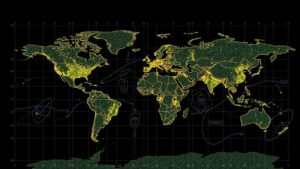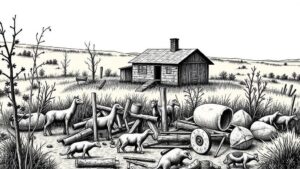Unlocking Forgotten Caches with Genealogical Maps and Historical Diaries
Unlocking Forgotten Caches with Genealogical Maps and Historical Diaries
The intersection of genealogical research and historical documentation offers a powerful mechanism for uncovering lost narratives buried within dusty archives and forgotten repositories. Understanding lineage through genealogical maps and elucidating personal stories through historical diaries presents a unique methodology for researchers, historians, and genealogists alike. This article delves into the ways these tools can unlock forgotten caches of information, supports claims with concrete examples, and highlights the implications for historical scholarship.
The Role of Genealogical Maps
Genealogical maps serve as visual representations of familial relationships over time, often revealing connections between individuals and their ancestral origins. e maps provide critical context for understanding demographic shifts and migration patterns. For example, the use of the Family Tree visual format allows researchers to trace lineage and identify historical connections that span generations.
Historical Context of Genealogical Mapping
Historically, genealogical mapping emerged as a formalized study in the 19th century. The expansion of state records, particularly with the advent of civil registration in countries like England in 1837, provided a wealth of data crucial for mapping family trees. Researchers could now document births, marriages, and deaths, laying down a foundation for deeper genealogical exploration.
Real-World Example: The Migration Patterns of Irish-American Families
An exemplary case study can be drawn from the migration of Irish families to America during the Great Famine (1845-1852). Genealogical maps illustrating the movement of these families reveal significant regional clusters in cities such as Boston and New York. For example, the 1850 U.S. Census data indicates that Irish immigrants comprised approximately 19% of the population in Boston, illustrating this migration trend.
The Significance of Historical Diaries
Historical diaries offer personal insights that often augment the broader societal narratives captured in official records. These primary sources provide subjective experiences and daily life context, enriching historical accounts. A diary entry from a settler in the 19th century may detail local interactions, illustrating the societal dynamics absent from census records.
The Value of Personal Narratives
Personal narratives allow for nuanced understandings of history. Diaries can document hardships, triumphs, and the quotidian aspects of life, which statistics alone cannot convey. For example, John W. McCormick’s diary, kept during his journey through the Oregon Trail in 1843, encapsulates the challenges faced by pioneers, including illnesses, weather adversities, and interpersonal relationships among travel companions.
Illustration of Historical Context Through Diaries
McCormick’s entries, peppered with emotions and reflections, amplify our comprehension of pioneer life. His detailed accounts, which include dates, actual locations, and vivid descriptions of landscapes, invite readers into the era, allowing them to visualize the complexities of daily existence amid westward expansion.
Connecting the Dots: A Synthesis of Maps and Diaries
The juxtaposition of genealogical maps and historical diaries possesses the potential to craft holistic historical narratives. By mapping the locations referenced in diaries against genealogical data, researchers can establish a more dynamic understanding of social structures and individual experiences within those structures.
Case Study: The Lewis and Clark Expedition
An illustrative application can be seen in the analysis of the Lewis and Clark expedition. Genealogical mappings of prominent figures, such as William Clark, coupled with diaries from expedition members, provide insights into both kinship ties and exploratory experiences. Such analyses reveal not only familial relations but also regional interactions with Native American tribes at various waypoints along the journey.
Implications for Historical Research
The integration of genealogical maps and historical diaries transforms the landscape of historical research. Scholars utilizing these resources can deconstruct traditional narratives, offering richer, multidimensional insights into past societies. This method can illuminate previously unrepresented voices and experiences, thereby contributing to a more equitable historical discourse.
Professional Application of Research
Historians, genealogists, and educators can apply these findings to enhance public history projects, educational programming, and even documentary filmmaking. For example, using genealogical mapping alongside personal diaries can drive community engagement by resurrecting local histories often overlooked in broader historical narratives.
Conclusion
Unlocking forgotten caches of historical and genealogical significance relies upon the adept integration of genealogical maps and personal diaries. Through such a synthesis, researchers can illuminate complex narratives that span communities and generations. Moving forward, an emphasis on these methodologies in academic and public history contexts promises to enrich our understanding of the human experience across time and space.



